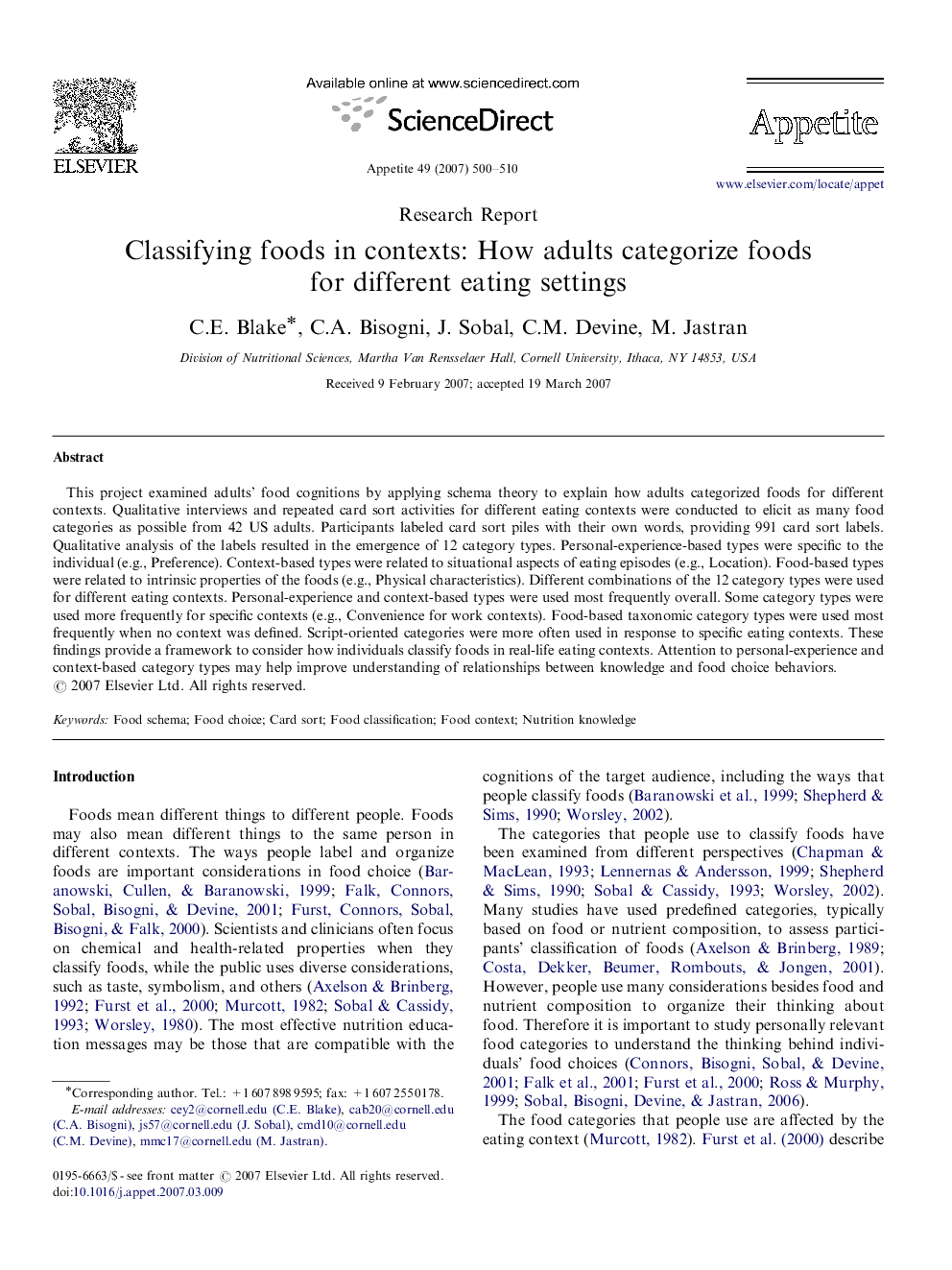| Article ID | Journal | Published Year | Pages | File Type |
|---|---|---|---|---|
| 941584 | Appetite | 2007 | 11 Pages |
This project examined adults’ food cognitions by applying schema theory to explain how adults categorized foods for different contexts. Qualitative interviews and repeated card sort activities for different eating contexts were conducted to elicit as many food categories as possible from 42 US adults. Participants labeled card sort piles with their own words, providing 991 card sort labels. Qualitative analysis of the labels resulted in the emergence of 12 category types. Personal-experience-based types were specific to the individual (e.g., Preference). Context-based types were related to situational aspects of eating episodes (e.g., Location). Food-based types were related to intrinsic properties of the foods (e.g., Physical characteristics). Different combinations of the 12 category types were used for different eating contexts. Personal-experience and context-based types were used most frequently overall. Some category types were used more frequently for specific contexts (e.g., Convenience for work contexts). Food-based taxonomic category types were used most frequently when no context was defined. Script-oriented categories were more often used in response to specific eating contexts. These findings provide a framework to consider how individuals classify foods in real-life eating contexts. Attention to personal-experience and context-based category types may help improve understanding of relationships between knowledge and food choice behaviors.
